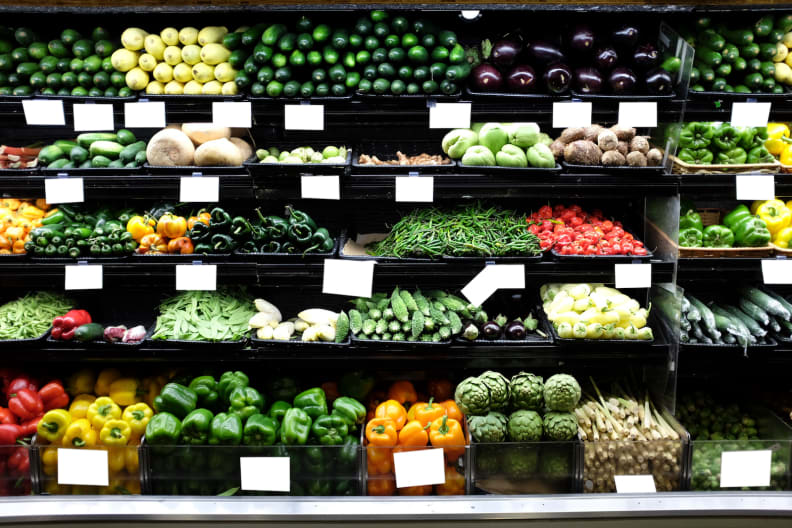How to buy cheap wine that's actually good
Learning about wine can help you stick to your budget
Products are chosen independently by our editors. Purchases made through our links may earn us a commission.
Is it possible to buy wine without spending a fortune and get something you’ll enjoy before uncorking the bottle or ever tasting it? The answer is yes. As long as you learn to identify your personal tastes and not be afraid to speak up, there are lots of ways to feel more confident about your wine buying (even among the cheaper bottles!).
For starters, let's be clear: Wine is a gigantic, overwhelming, and subjective topic. There's no simple way to picking great, inexpensive wines; you need to learn what you like, and that takes time.
I began by going to a few introductory wine classes at my local wine bar, which led to formal classes and receiving a certification, and then further falling down a rabbit hole where I have spent much of my free time over the past handful of years talking, reading, tasting and writing about wine.
But you don’t have to go through all that. You can start navigating this vast world with a few simple tricks that will take the stress out of finding a great bottle.
Here are a few tips to get started:
Don’t be afraid to ask the professionals
Whether it’s the salesperson at your neighborhood wine shop or a sommelier at the Michelin 3-star restaurant, never be afraid to share your budget and tell them what you like in a wine (we’ll get to how to expand your wine vocabulary further down in this piece).
Of course, obtaining a first-growth Bordeaux at a bargain price might be difficult, but they can easily find an alternative for your budget if you give them a few simple details. Then the next time you return to the shop, be vocal about what you liked or didn't like about that recommendation. By continuing the conversation, those recommendations should become more tailored to your tastes.
A manager of a Washington, D.C.-shop once shared with me that he wished more customers would come in and ask questions like, “I’m having pizza for dinner and I want $10 wine to go with it." Most wine professionals enter the field because they are passionate about wine. They want to share their knowledge and also want you to be passionate about what you’re drinking, too.
So, how do I know what I’m looking for?
The only way to truly know what you like is by tasting, and then tasting some more, and exposing yourself to all kinds of wine. While you taste, be sure to pay attention to the small nuances in every sip and breathe in its aroma. That doesn’t mean you have to purchase and open cases upon cases of wine.
Most wine shops will host weekly free tastings. Go in, and not just taste the wines, but ask questions about how the taste correlates with the winemaking style, or the age of the vines, or the location of the vineyard, or if the wine is a typical representation of that particular grape.
All these answers will help give you a foundation to discover which wines you prefer. Choosing a wine to buy isn't just about the producer (or brand), it's understanding all the other details. Once you can do that, you'll be amazed at the freedom you have when shopping for a bottle.
Another fun way to get introduced to new wines is by joining a wine club. Whether it’s an online wine subscription service, or through your local wine shop, curated monthly deliveries (often available at different price points) are a great way to be introduced to new kinds of wine without having to make the decisions yourself.
Learn to communicate by smelling veggies and keeping track of what you taste

There’s no reason to speak the same language of those flowery tasting notes you see by wine critics in those glossy wine magazines, but if you’re having trouble putting words to flavors, there's an easy way to expand your vocabulary as you expand your palate.
Not sure how to explain a weird, sour vegetal note, or which fruit is dominating your Pinot? Next time you’re at the grocery store or a farmers market, pick up and smell the different fruits, vegetables, and fresh herbs—everything from the stem to the leaves to the fruit will have a different aroma which you might find in a glass of wine.
Also, compare what you’re drinking to what other people are saying about the same wine. Talking about it with others who are sharing the same bottle could help validate what you’re thinking, or give you the words you were looking for. While not everyone will always taste the same thing, it’s a good starting point to learning the lingo.
Mobile apps like Delectable or Vivino, and the Cellartracker website are also a great way to see what others think of the wine you're drinking. Not only will these sites let you keep track of what you're drinking, and your own notes and ratings, but they also aggregate what others are saying about the same wines.
When I first started learning about wine, reading those notes after I took a few sips helped me identify some of the flavors and helped me put words to sensations.
Pay attention to wine labels
As you’re tasting new wines, one more thing to note is the importer listed on the back label of most foreign wine bottles. If you discover many of the wines you enjoy are coming from the same importer, then chances are you’ll enjoy other bottles imported by that person or company—even more affordable ones. It’s not a sure thing, but if you combine that information, with your new-found knowledge of the varieties you enjoy from the regions you like, that will help narrow down the choices to something you'll most likely enjoy.
Find values on a restaurant list
Most restaurants mark up the price of their wine—often two to three times what you would pay at retail, sometimes even higher. So a great little trick is to search for the bottle you’re interested in on wine-searcher.com, a website that aggregates retail prices around the world for nearly every bottle on the market. If you see a bottle you want to purchase is closer to its retail price or not quite double, you’re most likely getting a great value.
Remember, a cheaper wine doesn’t mean a bad bottle. It can be a lower price for a number of reasons: It’s an obscure region that people don’t know about yet, or perhaps a new vintage is about to be released and the restaurant is trying to clear space in their cellar.
But it bears repeating, don’t be afraid to talk to the sommelier or bartender and be open and honest about what you’re looking for. The fear you’ll be judged is nonsense (I promise).
A few more tricks can save you money
If saving money is your only goal, a few more simple things to keep in mind:
Wines from regions you've never heard of are often less expensive than their more famous counterparts
Purchasing wine by the case may be expensive up front, but many stores have case (and sometimes half-case) discounts
Use wine-searcher.com for price comparisons
Costco sells wine (even the bottles collectors look for)
It never hurts to look through the bargain bins at fine wine shops. The more knowledge you have going in, the easier it will be to find the gems.
